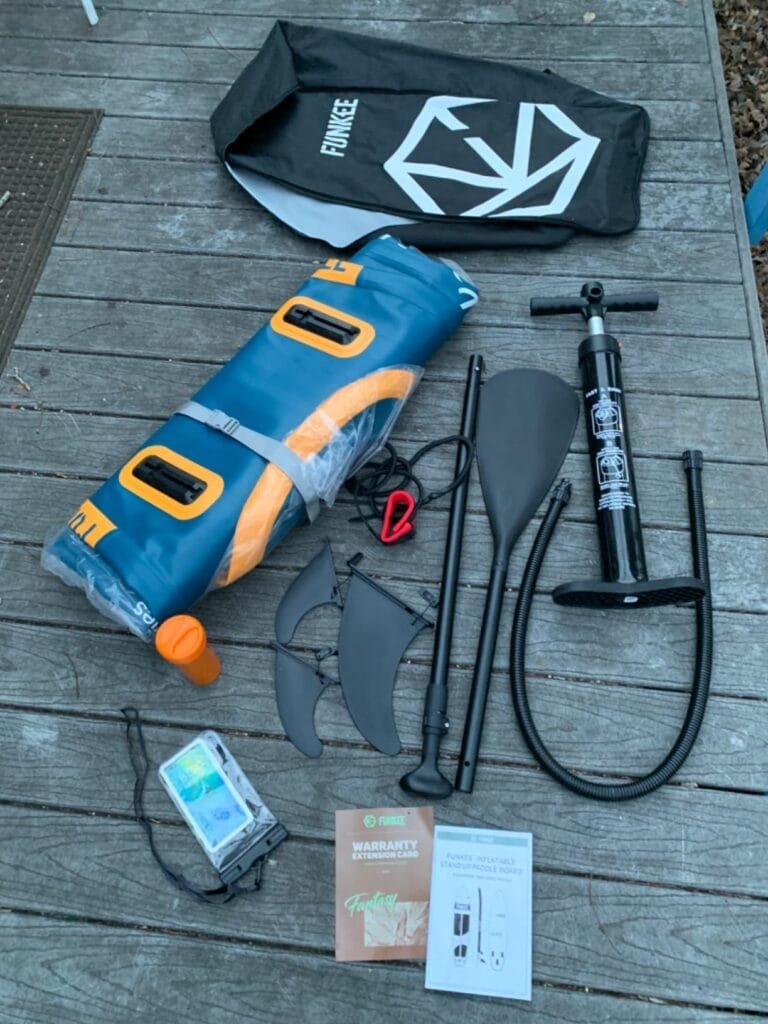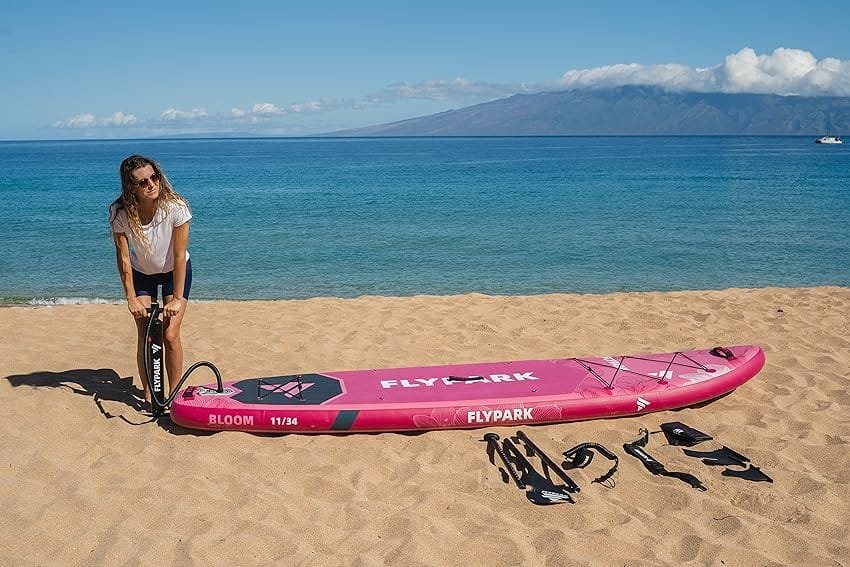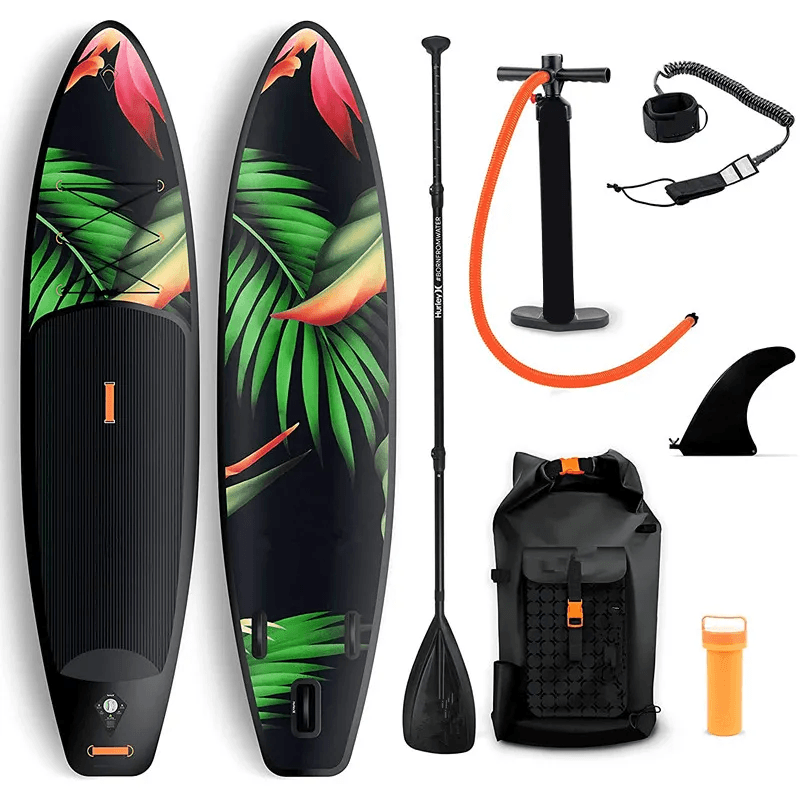If you are considering buying a paddle board, one of the first questions you may ask is: Are inflatable stand up paddle boards any good? The short answer is yes. Inflatable stand-up paddle boards (iSUPs) have come a long way in recent years and are now the go-to choice for many beginners, families, and even advanced paddlers. In this comprehensive guide, we will explore the pros and cons of inflatable SUPs, how they compare to hard boards, and why they might be the perfect choice for your next adventure.
What Is an Inflatable Stand Up Paddle Board?
An inflatable SUP is made from military-grade PVC and drop-stitch construction, allowing it to be inflated to 12–20 PSI. When fully inflated, a high-quality iSUP feels almost as solid as a traditional hard board, but with the added benefits of portability and convenience.
Instead of being a large, rigid board, an inflatable SUP can be deflated, rolled up, and packed into a backpack for easy storage and transport. This makes them highly popular among city dwellers, travelers, and anyone with limited storage space.

The Benefits of Inflatable Stand Up Paddle Boards
1. Easy to Transport
One of the biggest advantages of inflatable paddle boards is their portability. You can carry them in a backpack, check them on an airplane, or fit them into the trunk of a small car without any roof racks.
2. Space-Saving Storage
Unlike hard boards, which require large storage areas, inflatables can be stored in closets, under beds, or in garages. This is especially useful for apartment owners or those with limited space.
3. Durability and Strength
Thanks to modern construction methods, inflatable SUPs are incredibly durable. They resist dings, cracks, and scratches, which are common problems with fiberglass hard boards. Dropping your iSUP on rocks or docks is far less risky.
4. Versatility
Inflatable paddle boards are versatile enough for various activities, including: – Flatwater paddling – Yoga and fitness – Fishing – Touring and long-distance trips – Small wave surfing
5. Safety and Comfort
The soft surface of an inflatable SUP is more forgiving than a hard board, making it safer for kids, pets, and beginners. The EVA foam deck pad also adds comfort for kneeling, sitting, or doing yoga poses.
6. Budget-Friendly
Inflatable SUPs are often more affordable than hard boards. Even premium iSUPs typically cost less than high-end fiberglass or carbon fiber boards, making them a great choice for budget-conscious paddlers.

How Do Inflatable SUPs Compare to Hard Boards?
While inflatable paddle boards are highly popular, some paddlers still prefer hard boards for specific reasons. Let’s compare them:
Performance
- Inflatable SUPs: Offer excellent stability and rigidity, especially at 15–20 PSI. Perfect for recreational paddling, yoga, and fitness.
- Hard Boards: Slightly better for professional racing or surfing due to their speed and responsiveness.
Portability
- Inflatable SUPs: Easily portable, lightweight, and travel-friendly.
- Hard Boards: Require roof racks or large vehicles to transport.
Storage
- Inflatable SUPs: Can be stored in small spaces.
- Hard Boards: Need a garage, shed, or storage rack.
Durability
- Inflatable SUPs: Resistant to impact, scratches, and dents.
- Hard Boards: Susceptible to cracks and chips when dropped.
Cost
- Inflatable SUPs: More budget-friendly and often come as complete packages with paddles, pumps, and backpacks.
- Hard Boards: More expensive, with fewer accessories included.
In short, unless you are a competitive racer or professional surfer, an inflatable SUP will meet or exceed your needs.
Who Should Choose an Inflatable Stand Up Paddle Board?
Inflatable SUPs are suitable for almost everyone, but they are especially great for:
- Beginners: Stable, forgiving, and easy to use.
- Families: Safe for kids and pets, with plenty of deck space.
- Travelers: Perfect for road trips, flights, and vacations.
- Apartment Owners: Easy to store without needing a garage.
- Fitness Enthusiasts: Great for yoga, Pilates, and core workouts.
- Anglers: Extra D-rings and bungee systems make them perfect for fishing setups.

Things to Consider Before Buying an Inflatable SUP
To make sure you get the right board, here are a few factors to consider:
1. Size and Dimensions
- Length: 10–12 feet is ideal for most beginners.
- Width: 32–34 inches provides excellent stability.
- Thickness: 6 inches ensures rigidity and balance.
2. Weight Capacity
Make sure the board supports your weight plus any extra load such as pets, kids, or gear.
3. Included Accessories
A good package should include a pump, paddle, repair kit, safety leash, fins, and a carrying backpack.
4. Inflation Pressure
Choose a board that inflates to at least 15 PSI for maximum stiffness and performance.
5. Warranty
Look for boards with a 1- to 3-year warranty, which shows confidence in quality and durability.
Common Myths About Inflatable Paddle Boards
- Myth 1: They are flimsy. Modern inflatable SUPs are rock-solid when inflated to proper PSI.
- Myth 2: They don’t last long. With proper care, an inflatable SUP can last 5–10 years.
- Myth 3: They are only for beginners. Many advanced paddlers and professionals use iSUPs for touring, racing, and fitness.
How to Care for Your Inflatable SUP
- Rinse with fresh water after use, especially in saltwater.
- Dry completely before storing to prevent mold.
- Avoid leaving it in direct sunlight for extended periods.
- Store in a cool, dry place.
- Patch small leaks promptly with a repair kit.
Final Thoughts: Are Inflatable SUPs Any Good?
Absolutely. Inflatable stand-up paddle boards are durable, portable, versatile, and affordable, making them a great choice for almost any paddler. Unless you are a competitive athlete looking for maximum speed in races, an inflatable SUP will meet all your needs and provide countless hours of fun on the water.
If you are ready to experience the convenience and excitement of paddleboarding, explore our full selection of inflatable SUPs at PaddleBoardInc. With the right board, you’ll be ready to enjoy lakes, rivers, and oceans with ease.




